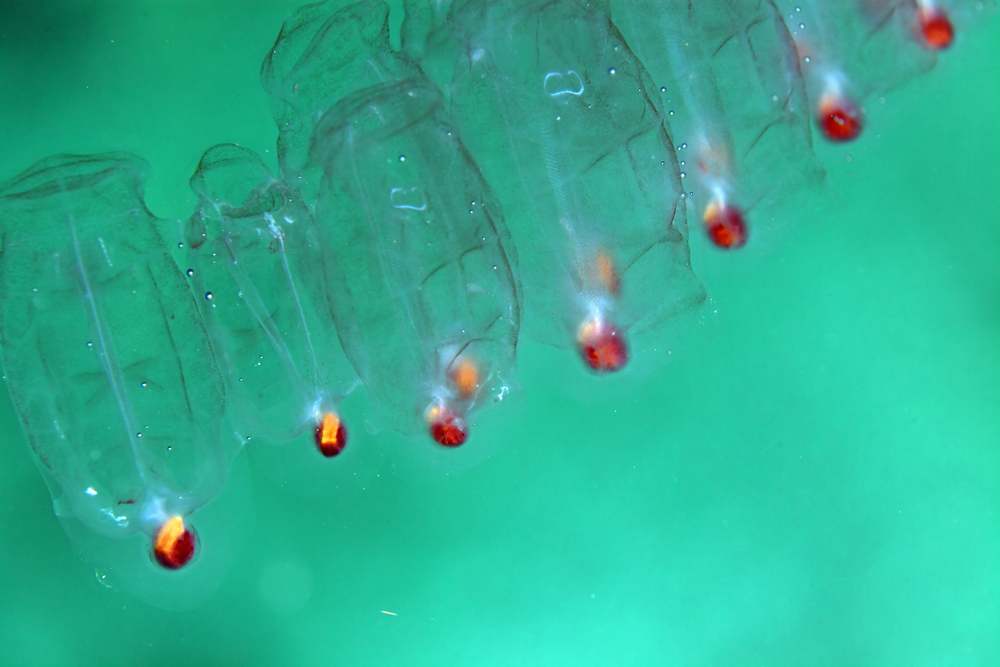
Definition: a family of marine invertebrate filter feeders which form long chains as part of their life cycle.
When walking along a beach or by the water’s edge you may come across a transparent blob washed up on the shore or floating in the shallows. If your first thought is ‘jellyfish’, then you might be right, but it could be something else entirely—you may well be looking at a stranded salp.
Despite their simple appearance, salps are highly evolved animals with a heart, gills and spinal cord. This makes them far more closely related to us humans than to jellyfish. Salps are creatures of the open ocean. They can live as free-swimming individuals or reproduce asexually into long elegant chains. By pumping water through their bodies and using electrical signals to communicate, these chains travel around with remarkable efficiency. Chained salps start out as female and must find an older male chain to fertilise them. Young salps are born and grow and detach from the chain to become asexual solitary salps that will eventually produce chains of their own.
Meanwhile the female chain eventually transforms into a male one and will fertilise another female chain and so the cycle continues. Having two reproduction options makes salps highly adaptable to change. This is particularly important as the availability of their food of choice, plankton, can fluctuate wildly. During huge plankton blooms, salps can greatly increase in number to take advantage of the sudden abundance of food. It’s during these population explosions when salps often get washed up on beaches and confuse tourists.
Salps have been studied to help understand how brains and nervous systems like ours might have evolved. Studying the genetics of salps and other organisms has also confirmed that humanity’s ancient ancestors were probably free-swimmers like salps rather than rock-clingers like other forms of aquatic life. Certain salps may even be combating climate change. Researchers note their ‘dense rapidly sinking fecal pellets’ removes excess carbon from the ocean surface, transporting it down into ocean depths. The waste is very much appreciated by the ever hungry creatures of the dark abyss.
Bonus Facts
1: The solid blob seen near the rear of most salps is actually food inside the gut.
2: Sizes of individual salps (called oozoids) vary greatly between species. Some are only a few mm long, but the rather unusually named Thetys vagina can exceed 30cm each.
